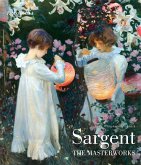"Both medieval panel painters and those working in the fifteenth century created works that evoke the glow of precious stones, the sheen of polished gold and silver, and the colorful radiance of stained glass. Yet their approach to rendering these materials is markedly different. Marjolijn Bol explores some of the reasons behind this radical transformation by telling the history of the two oil painting techniques used to depict everything that glistens and glows-the varnish and the glaze. For more than a century after his death, the fifteenth century painter Jan van Eyck was widely credited with the invention of varnish and oil paint, on account of his unique visual realism. This was a myth, however, and after it was revealed as such, the remarkable verisimilitude of his work was attributed instead to a new translucent painting technique, a technique the artist could have only innovated with oil paint already at his disposal: the glaze. Today, most theories about how Van Eyck achieved his visual realism revolve around this idea: that he was the first to discover or refine the glazing technique. Bol, however, argues that, rather than being a fifteenth-century refinement, varnishing and glazing began centuries before and, moreover, that these two techniques were not only explored by painters but were developed by a variety of artisans as part of the medieval material culture of splendor. Artisans embellished metalwork and wood with varnishes and glazes to imitate gems and enamel; infused rock crystal with oil, resin, and colorants to imitate more precious minerals; and oiled parchment to transform it into the appearance of green glass. Likewise, medieval panel painters used varnishes and glazes to create the look of water, silk, and more. What's more, Bol shows how the explorations of materials and their optical properties by these artists stimulated natural philosophers to come up with theories about transparent and translucent materials produced by nature"--
Hinweis: Dieser Artikel kann nur an eine deutsche Lieferadresse ausgeliefert werden.
Hinweis: Dieser Artikel kann nur an eine deutsche Lieferadresse ausgeliefert werden.








